The Intel Core i9-13900KS Review: Taking Intel's Raptor Lake to 6 GHz
by Gavin Bonshor on January 27, 2023 10:00 AM ESTCPU Benchmark Performance: Science
Our Science section covers all the tests that typically resemble more scientific-based workloads and instruction sets. For our 2023 CPU suite, we've also added SciMark 2.0 which measures numerical kernels and various computational routines found in numeric coding.
We are using DDR5 memory on the 12th and 13th Gen Core parts, as well as the Ryzen 7000 series, at the following settings:
- DDR5-5600B CL46 - Intel 13th Gen
- DDR5-5200 CL44 - Ryzen 7000
- DDR5-4800 (B) CL40 - Intel 12th Gen
All other CPUs such as Ryzen 5000 and 3000 were tested at the relevant JEDEC settings as per the processor's individual memory support with DDR4.
Science
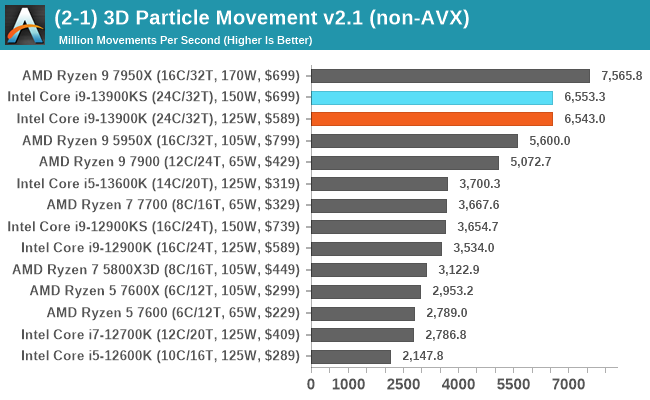
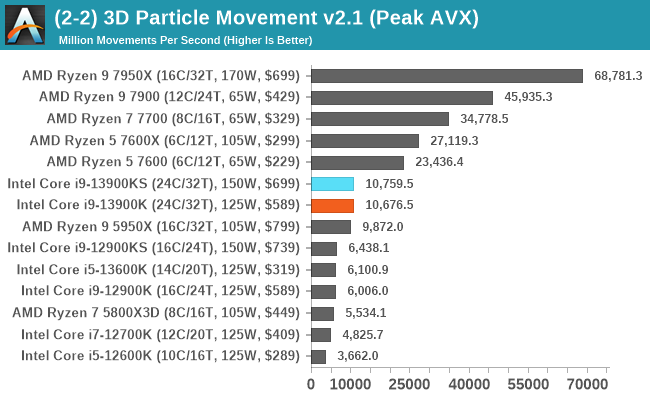
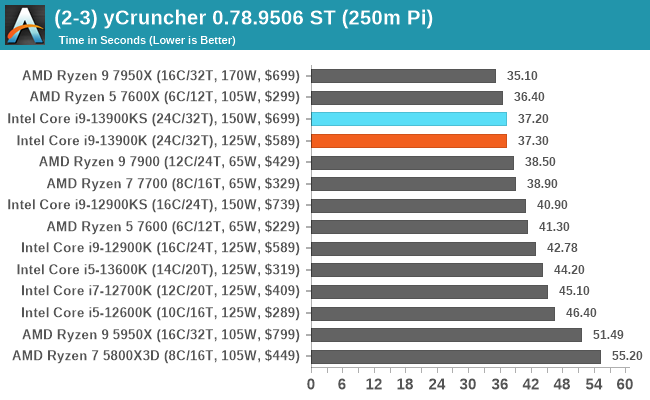
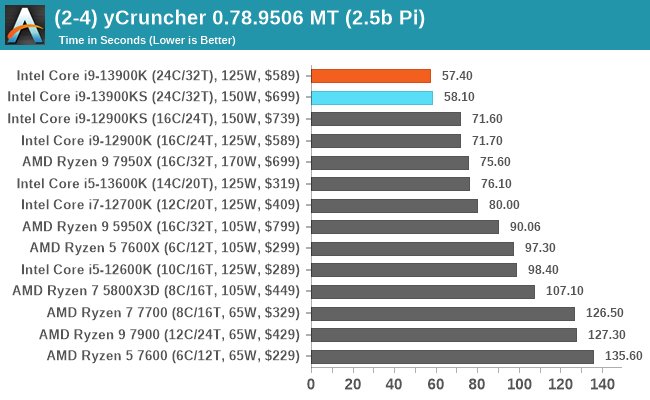
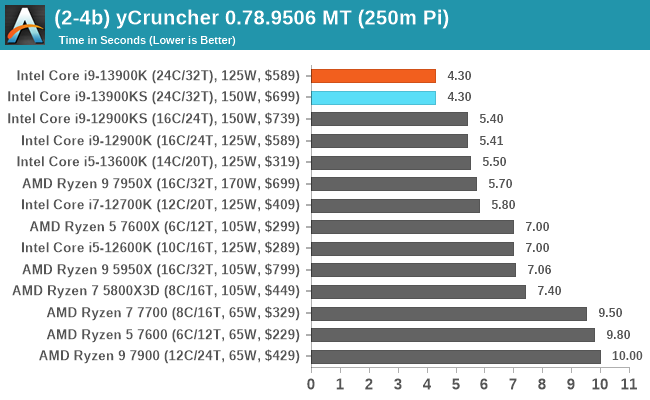
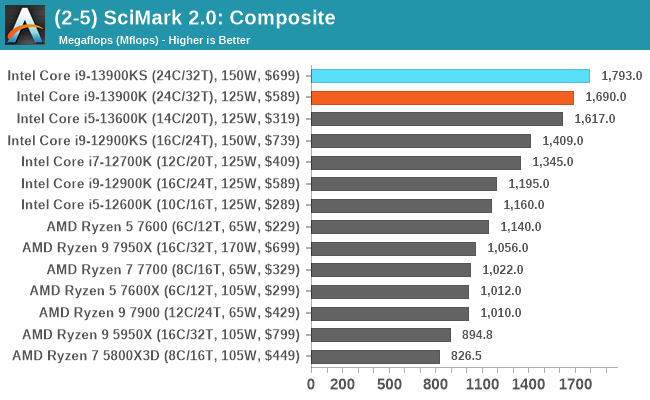
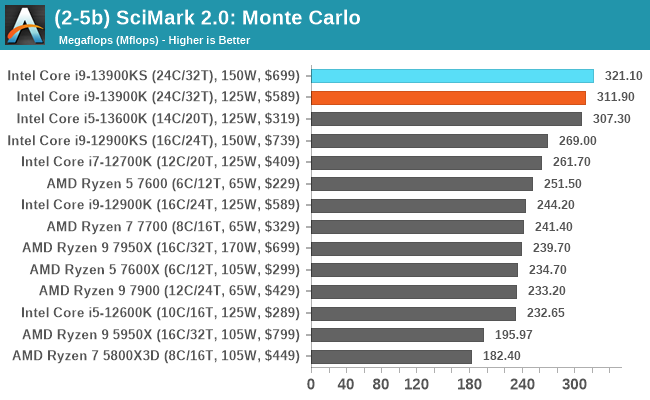
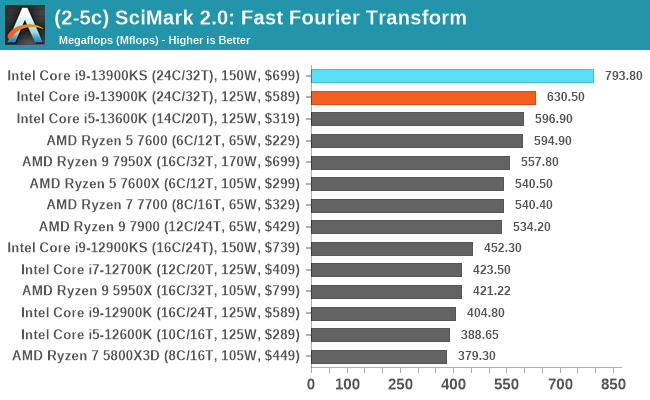
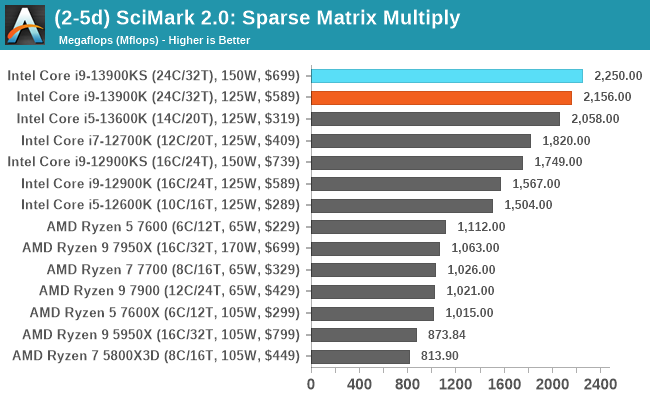
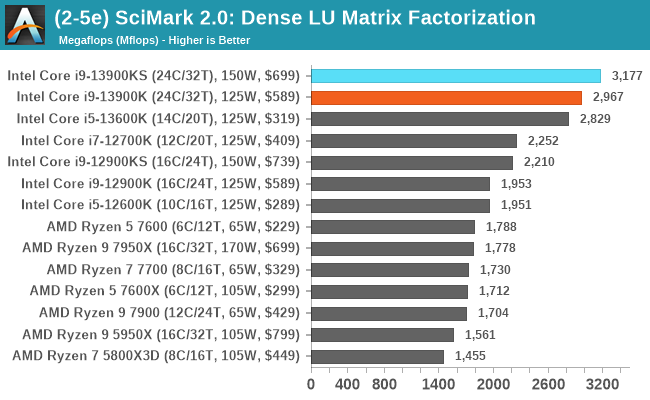
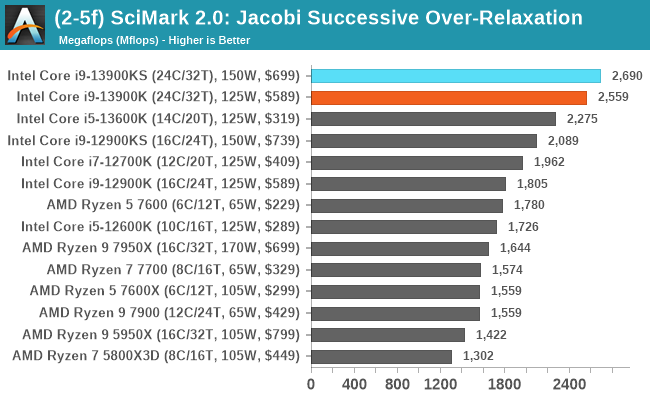
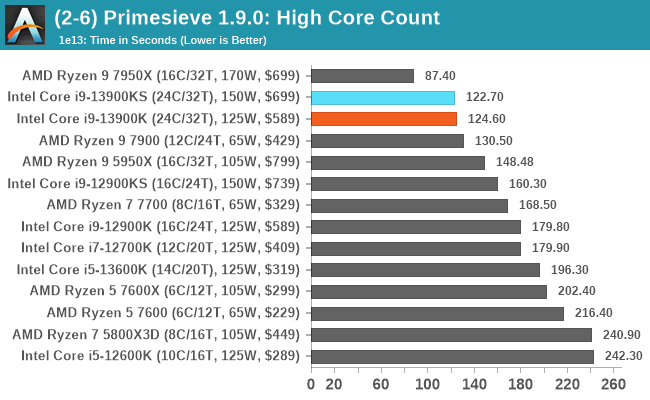
Our science-focused benchmarks highlight the fact the Core i9-13900KS and Core i9-13900K are both very similar in regard to performance. Outside of the 3DPM v2.1 AVX test where AMD gains the advantage in actually supporting AVX-512 instruction sets, the additional bump to base and turbo clock speeds doesn't yield too much benefit here.










39 Comments
View All Comments
Arbie - Saturday, January 28, 2023 - link
FWIW I got the wrong impression from that statement too.I was a little more put off by the remark that "360 W isn't that easy to cool ... with a typical tower air cooler". That implies that someone clever enough could reasonably do so. I don't think it's possible - and if that's true would just say so. For the benefit of novice readers who (as I know from my own experience) will assume that *they* can.
Gavin Bonshor - Saturday, January 28, 2023 - link
You can technically use a premium tower cooler with this CPU, such as a Noctua NH-D15, and still see decent levels of performance; but you won't get all of it.The issue is you shouldn't. This is because thermal throttling will roll back the frequency and CPU V-Core until it finds a sustainable thermal load that can dissipate. It's very clear in the conclusion that custom loop water cooling is the way to go.
A5 - Saturday, January 28, 2023 - link
Do we know for sure that a custom loop could cool it? You alluded to it in the piece, but 320W in that small of an area is going to be hard to get proper heat transfer from.cyrusfox - Monday, January 30, 2023 - link
Custom loop cooling can easily transfer that heat out(Water has huge heat capacity), each 120-140mm radiator is capable of ≈150W of cooling (This is dependent on fan speed on rads and temperature delta, good rule of thumb). I run dual 280 rads, so ≈ 600w cooling. I Only have 2 fans installed currently and my system draw is 400W (13700k + GTX1080) and I never see temps above mid 60's on GPU or CPU, I will bring this down further by increasing air flow (Speed/ additional fans).This chip was built for OC world records (LN) and for those with custom loops and not bothered by the price. I will likely opt for a 13900k and skip the extra binning tax personally, but its nice to see them push the envelope in this space, it does improve the full product stack beneath it as they bin for top turbo speed.
qwertymac93 - Saturday, January 28, 2023 - link
Do you think you could test various memory speeds to see how the latest AMD and Intel chips react to higher and lower RAM speeds? Investigate if latency or frequency is more important?Silver5urfer - Tuesday, January 31, 2023 - link
12th - 13th gen upgrade is just hogwash. Mediocre boost and massive heat density increase with high clock speeds. 8P saturation is the big deal here. Useless E cores pumping is just for those MT workloads, and bonus on Intel CPUs you have very low 3.2GHz base clocks vs AMD's 4GHz base clocks on all Zen 4 processors. E cores are even worse.$730 MSRP + Tax for a binned chip but the RPL-R Refresh is hitting soon, so this purchase is going to be thrown into drain, no matter how binning is. Also from 13th gen SP binning is not much a big deal like of 10th gen because most of the 13900K processors and i9 parts KF are already top bins, they selected high quality silicon. Whereas for 10900K i9 there were a ton of low SP rated i9 and some of them were poorer in clock speed ratio they ended up in 10850K. Whereas for 13900K many can hit 5.8GHz all core OC aka 8P max at 400W+ in All Core CBR type workloads.
Plus 39K-40K on 7950X vs 43K max (OCed optimized 13900K) but wattage ? 420W on Intel vs 270W-300W max on AMD. It makes no sense to buy into this LGA socket bending platform. Only if you care about that PCIe chipset bandwidth shortage on Zen 4 PCIe 4.0x4 link vs 4.0x8 on RPL you buy Intel. The performance difference is negligible, bonus you do not get to buy some aftermarket BS ILM brace nor hunt for 8000MHz kits and trying to optimize it without WHEA (granted you have a top MC SP rated i9) or try to cool down the 350-400W of high heat, and virtually no possibility of using Air Cooler. Plus you get a Zen 5 socket in upgrade which will wipe the floor. Look at AMD's Gen vs Gen improvements, it was always high esp Zen 2 vs Zen 3 vs Zen 4 all giant leaps vs Intel 10th-11th-12th (yea this is big because Intel sabotaged the 11th by backport) - 13th is so small vs 12th.
Silver5urfer - Tuesday, January 31, 2023 - link
I forgot to mention AVX512, Zen 4 is having massive advantage over Intel in that and RPCS3 is a major workload esp for those old God of War, Motor Storm, Ratchet and Clank, Sonic, Red Dead Redemption and other ton of solid titles on Sony's Playstation 3 (PS4 is just junk).byte99 - Sunday, February 19, 2023 - link
In looking at many of your benchmarks (e.g., the CPU Benchmark Performance: Science suite), there's no way to tell from what you've posted if they are single-core or multi-core, and if they are CPU-only or CPU+GPU.Ideally this info. should be added to the graphic header for each benchmark. You could put it in small type, right after where you say, e.g., "Time in Seconds (lower is better)". Once you've updated your headers, it would be no extra work for you to provide that info.
birthday wishes to employee - Saturday, February 25, 2023 - link
Great post thanks for sharing